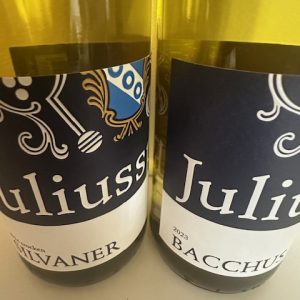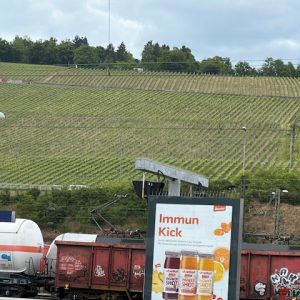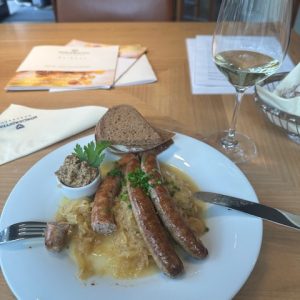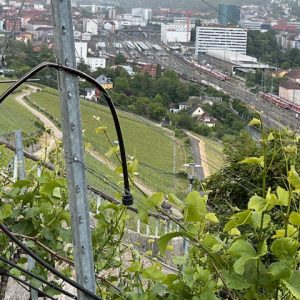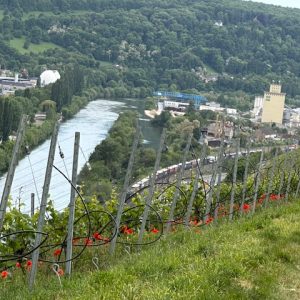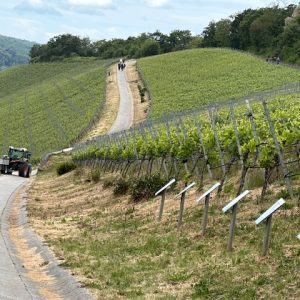Würzburg, Germany
Last week, I was on a train in southern Germany, travelling towards Basel. I asked Elizabeth, a German lady seated next to me, which German town I should visit for some beautiful wine walking.
Without hesitation, she recommended Würzburg. Now Würzburg is a big train trip from Paris. It is 3 ½ hours to Frankfurt, and then another one hour east-southeast before arriving in Würzburg. But it was worth the effort.
The wine walker is pleasantly greeted on arrival by vineyards which climb sharply up a hill behind the station. As evidence of nature’s occasional symmetry, vineyards also climb up the hills on the other side of town. In between, the town of Würzburg lies on the banks of the Main river.
As with most everywhere in Europe, there is no end of history in Würzburg. A Bronze Age refuge castle, the Celtic Segodunum, and later a Roman fort, stood on the hill known as the Leistenberg, the site of the present Fortress Marienberg.
More recently, from April 1943 to March 1945 a subcamp of the Flossenbürg concentration camp was located in the city, with dozens of prisoners, mostly from Poland and the Soviet Union. On 16 March 1945, about 90% of the city was destroyed in 17 minutes by firebombing from 225 British Lancaster bombers during a World War II air raid.
Over the next 20 years, the buildings of historical importance were painstakingly and accurately reconstructed. Today’s Würzburg is a very beautiful mid-sized town of about 130,000 residents.
Würzburg is also a university with some 30,000 students. The University of Würzburg was founded in 1402 and is one of the oldest universities in Germany.
When it comes to wine, Silvaner is the favoured grape variety. The Silvaner that I tasted was a well balanced white wine, with good fruit, but much less acid than a riesling. There are also large quantities of riesling grown in Würzburg.
Sylvaner is an ancient variety that has long been grown in Central Europe. It is thought that the grape came to Germany after the Thirty Years’ War.
One highlight of my trip was a lunch of Bratwurst sausage, sitting on a bed of sauerkraut made with silvaner wine. Simply delicious!
As ever, the other highlights were the anecdotes from chatting with locals, who I shamelessly bombarded with questions.
Immigration is a perennial topic, along with the far-right Alternative for Germany political party. Locals complain about immigrants benefiting from welfare and having big families.
But Germans seem to overlook the fact that a majority of immigrants actually work, thereby contributing to the economy and government revenues. Indeed, as a visitor, I encounter virtually only immigrants in the form of hotel staff, taxi drivers, restaurant workers, street cleaners, etc.
The higher fertility rate of immigrants should be welcomed, as a partial compensation for the very low fertility rate of native Germans. Overall, the current German fertility rate is only 1.6 births per woman, much lower than the “replacement rate” of 2.1, which is necessary to maintain a steady population.
In other words, immigrants and their high fertility rate are helping offset the shrinking of the German nation!
I have written previously about the inefficiency of the German train system. One lady told me that German trains are no longer allowed to enter the Swiss train system, and must dispose of their passengers at the border. The unpunctuality on German trains was a source of disturbance to the Swiss system which has Japanese style punctuality.
